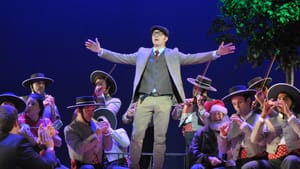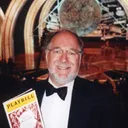Stay in the Loop
BSR publishes on a weekly schedule, with an email newsletter every Wednesday and Thursday morning. There’s no paywall, and subscribing is always free.
The barber gets clipped
Opera Philadelphia’s updated ‘Barber of Seville’

The title always has told us where the opera is set. Nevertheless, rarely does a Barber of Seville production look specifically Spanish.
So I was excited by this conception, which was said to take place in Seville. Clearly it could not be the Spain of today because the plot stresses that lovers can communicate only with handwritten letters. But Spain at a somewhat earlier time? What a wonderful idea, to place the opera when royalty and dukes still controlled that most conservative of European nations. The Barber of Seville presumes a society in which women were repressed and rigidly controlled by men and by the church, and young women were virtually imprisoned, as they were in Spain until the advent of the Spanish Republic in 1931.
The tenor hero, the noble Almaviva, must rescue Rosina from the house where she is a captive, and the opening scene appeared promising, as Almaviva sang his serenade accompanied by musicians in sombreros and old-fashioned clothes.
Elvis impersonator
But presently director Michael Shell and costume designer Amanda Seymour filled the stage with characters who looked and behaved like participants in a film by the irreverent pop-culture Spanish filmmaker Pedro Almodóvar.
The libretto tells us Rosina is locked in her house and shuttered in her room, yet here we saw a modern woman working in a doctor’s office, where she pressed her body against the lap of one of the patients. The repressed and strictly raised Rosina strutted ln V-neck blouses, modern skirts, and high heels, with her hands on her hips and smoking cigarettes.
Many added touches confused rather than enlightened, and stage business sometimes interfered with the music. Here are three of the scenes where it did:
- “La calunnia” is the bass aria in which Basilio describes the use of slander, or calumny, to the point where it overwhelms its target. Rossini composed a carefully-calibrated escalating crescendo. In this production, Basilio became an Elvis Presley impersonator, grabbing a microphone and thrusting his hips.
- Rossini wrote vividly descriptive storm music in Act II. Here that rainstorm was replaced by a dream scene for Dr. Bartolo.
- Rossini’s final ensemble is a triumphal chorus with solo interjections of joy by Almaviva and Rosina. This director diverted attention from them to Dr. Bartolo strutting like a rooster at the far edge of the stage.
Making Dr. Bartolo a doctor of ophthalmology was clever, since the man is blind to the desires of his ward. But the scene came undone when Rosina climbed on a patient’s lap to administer eyedrops; her sexual aggressiveness is all wrong for the character.
Figaro overshadowed
Even if we accept that this production is an homage to Almodóvar rather than to Rossini, the result still is disappointing.
The production often is funny and certainly is crammed with vivid colors, and some may feel that this is a magnet for opera newbies. To the contrary, a first-time operagoer would have a hard time understanding or relating to what was going on.
Almost overshadowed by the busy production were the singers. Taylor Stayton’s flexible leggiero tenor was perfect for Count Almaviva, and the vocal highlight was his rendition of “Ah, il più lieto” just before the opera’s end. In the title role, Jonathan Beyer revealed a high baritone voice that was attractive yet lacked a strong lower register that would help him command the stage. Figaro is supposed to dominate the opera; here he was overshadowed by others, and his “Largo al factotum” did not get as much applause as did “La callunia” by the secondary character of Basilio.
Rooster mystery
Kevin Burdette practically stole the show as a comically smarmy Dr. Bartolo. His voice was richer than what we usually hear from that character, and he expertly handled the rapid vocal embroidery. Many in the audience wondered what to make of the multiple rooster images in the set by Shoko Kombara. My guess is that they refer to Dr. Bartolo, who acts like a cock-of-the-walk and who keeps his hens (his ward Rosina and his servant Berta) caged as if in a chicken coop. This production definitely makes Bartolo the center of attention. That wasn’t Rossini’s intent, but Burdette rose to the occasion.
Jennifer Holloway's Rosina was appealing, with smooth warm color and excellent technique. Wayne Tigges showed a solid bass voice as Don Basilio (reincarnated here as an Elvis impersonator).
Conductor Corrado Rovaris started the overture at a languid pace that seemed appropriate for Spain. Then he shifted to a faster tempo for contrast. Most of the orchestral playing moved at a brisk clip.
To watch a video clip, click here.
What, When, Where
The Barber of Seville. Opera by Gioachino Rossini; Corrado Rovaris, conductor; Michael Shell directed. Opera Philadelphia coproduction with Opera Theatre of Saint Louis through October 5, 2014 at Academy of Music, Broad and Locust Sts., Philadelphia. 215-893-1018 or www.operaphila.org.
Sign up for our newsletter
All of the week's new articles, all in one place. Sign up for the free weekly BSR newsletters, and don't miss a conversation.
 Steve Cohen
Steve Cohen